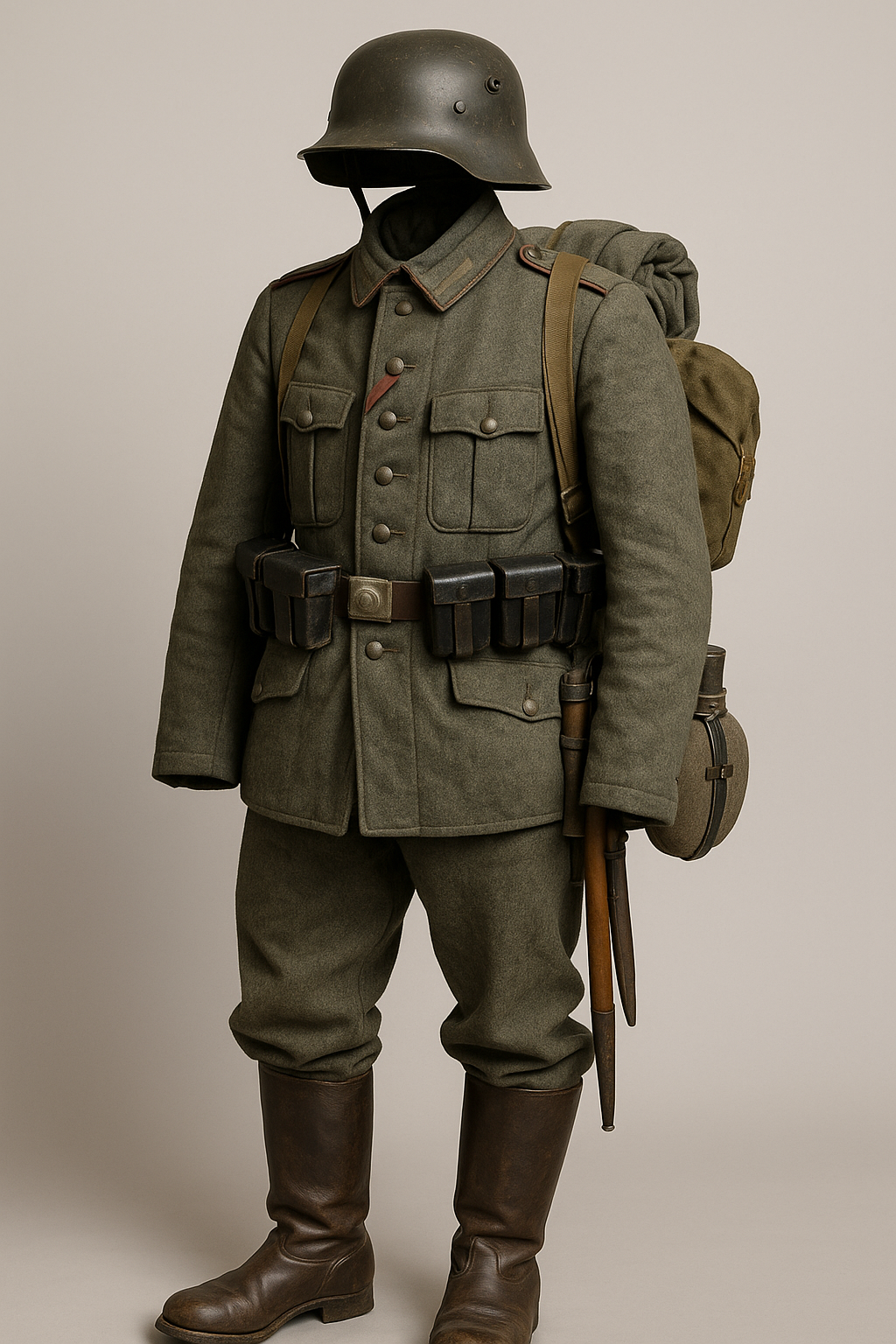
WW1 Reenactment Equipment Guide: Authentic German Uniforms & Costumes History
Published on Oct 02, 2025
WW1 Reenactment Equipment Guide: Authentic German Uniforms & Costumes History
Introduction: Did You Know the Pickelhaube Was Replaced Mid-War?
War history buffs might be surprised to learn that the iconic Pickelhaube (spiked helmet) — often associated with German WW1 uniforms — was largely phased out by 1916. Why? Because it was practically useless in trench warfare.
If you're fascinated by WW1 German uniform history or you're just getting started with war reenactments, knowing the authentic gear, where to find it, and what mistakes to avoid can be the difference between a generic costume and an impressive, historically accurate portrayal.
This guide dives deep into WW1 reenactment equipment, common pitfalls for beginners, how to build a credible German soldier impression, and even how trends from reenactment WW2 events are influencing today’s WW1 gear.
The Evolution of WW1 German Uniforms: From Parade to the Trenches
Early War Style: The Dress Uniform Look
At the outbreak of WW1 in 1914, the German soldiers' appearance was more ceremonial than combat-ready:
- Pickelhaube (spiked leather helmet)
- Feldgrau tunic (gray-green wool)
- Red piping on tunics and trousers
- Bright brass buttons and emblems
These uniforms reflected 19th-century military pride more than practical wartime needs.
Mid-War Adjustments: Trench Warfare Realities
As the war dragged on and trench warfare took over, the German army adapted:
- M1915 Tunic: Simpler cut, darker Feldgrau, no red trim
- Stahlhelm (steel helmet): Replaced the Pickelhaube for head protection
- Puttees and canvas gear to replace shiny leather
This transformation was crucial — not just for protection, but for camouflage.
WW1 Reenactment Equipment: What You Actually Need
Recreating a WW1 German soldier is both an art and a history lesson. Here's what you need for an authentic WW1 reenactment equipment kit:
1. Uniform Basics
- Tunic: M1907/10 or M1915 Feldbluse (field tunic)
- Trousers: Stone-gray wool pants with or without piping
- Puttees: Wool leg wraps for calf protection
- Cap: Krätzchen or M1915 Feldmütze, depending on rank and year
2. Headgear: Know the Era
- Pickelhaube for early war (1914–1915)
- M1916 Stahlhelm for later reenactments
🔍 Tip: Don’t mix helmets from different periods. It’s a common beginner mistake that stands out at events.
3. Load-Bearing Equipment
- Leather belt and Y-straps
- Ammo pouches (Kar98 or Gew98 specific)
- Bread bag, canteen, and mess tin
- Entrenching tool and bayonet
4. Footwear
- Jackboots (Marschstiefel): Tall leather boots for NCOs and early war
- Low boots with gaiters: For mid- to late-war representation
Avoid These Common Pitfalls in WW1 German Uniform Reenactment
Even the most enthusiastic reenactors make some missteps. Here’s what to watch out for:
1. Mixing Eras
- Wearing a Pickelhaube with an M1915 tunic is a visual mismatch.
- Stahlhelms don’t belong in early war impressions.
2. Inauthentic Materials
- Avoid polyester or modern wool blends. They look wrong under natural light.
- Modern buttons and zippers instantly break immersion.
3. Wrong Gear for Role
- Don’t wear officer insignia unless you're portraying one.
- Grenadiers carried specific gear — don’t add grenades if you're not representing them.
4. Overdoing the Aging
- Distressing your gear is good — but don’t go overboard. A "too grimy" uniform looks like a costume, not history.
Where to Source Quality War Reenactment Clothing
Finding authentic or reproduction war reenactment clothing can be tricky but rewarding. Stick to these sources:
Trusted Vendors
- At the Front (ATF): High-quality reproduction gear
- Hessen Antique: German WW1 and WW2 gear specialists
- Military Harbor: Budget-friendly, some quality control needed
Local Reenactment Groups
- Join WW1 or reenactment WW2 communities — they often have surplus gear, advice, or loaner kits.
eBay & Online Forums
- Great for one-off pieces, but buyer beware: know your labels and construction details.
Modern Trends in WW1 Reenactment Equipment
Just like any hobby, reenactment evolves. Today’s reenactors are:
- Focusing more on immersion, from period-accurate food to trench building.
- Using 3D printing to replicate rare parts like gas mask filters or bayonet frogs.
- Incorporating narratives — portraying individual soldiers with backstories based on diaries or unit histories.
- Cross-era reenactments — some WW1 groups participate in reenactments of WW2 events to show continuity.
WW1 Reenactment Equipment: Building Your Kit Step-by-Step
Here’s a beginner-friendly breakdown of how to assemble your impression.
Phase 1: Starter Kit
- M1915 tunic and trousers
- M1916 Stahlhelm
- Leather belt with ammo pouches
- Bread bag and canteen
Budget: $300–$500
Phase 2: Full Gear Setup
- Wool puttees or jackboots
- Bayonet with frog
- Field pack or rucksack
- Mess kit and utensils
Budget: Additional $300+
Phase 3: Specialist Role (Optional)
- MG team gear (tripod, belts)
- Trench periscope
- Medical pouch (for stretcher-bearers)
How WW1 Reenactment Differs from WW2 Reenactment
While both eras attract similar crowds, there are key differences:
Feature WW1 Reenactment WW2 Reenactment
Focus on Trench life, early tech warfare, combined arms, vehicles, and bigger battles
Uniform availability, Fewer suppliers, more DIY, Wide availability
Immersion level is higher due to simpler gear. Variable, depending on the unit
Gear complexity: Lower — no radios, simpler webbing. Higher — radios, tanks, etc.
Conclusion: Step Into History With the Right WW1 Reenactment Equipment
Whether you're attending your first event or upgrading your kit, understanding WW1 German uniform history is crucial. From the evolution of the Pickelhaube to the rise of the Stahlhelm, each detail tells a story.
✅ Focus on getting the basics right
✅ Build your impression era-appropriately
✅ Connect with the community for gear tips and events
Remember: it's not just about looking the part — it's about honouring the soldiers’ experiences.
